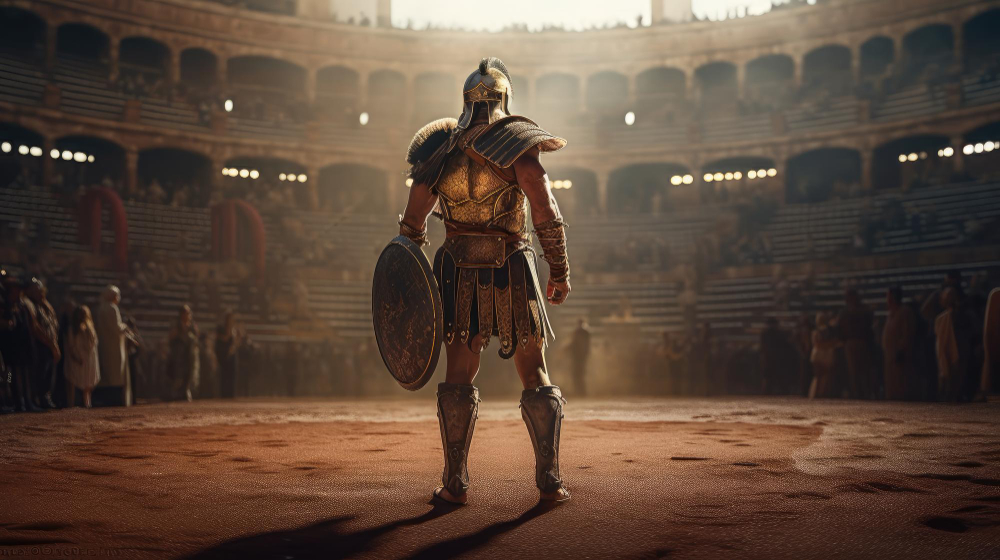
Theatre and Sport: A United History of Spectacle
Have you ever wondered if theatre and sport have more in common than meets the eye? Well, we’re about to take you on a historical journey that will unveil the astonishing connection between these two realms. Let’s delve into the captivating world of spectacle.
The Pervasive Culture of Spectacle
Picture yourself in ancient Rome, where life pulsated with grandeur and excitement. Spectacle wasn’t just a word; it was a way of life. The Roman world was alive with breathtaking displays, and two forms of spectacle reigned supreme: theatre and sport.
Triumphal Processions and Aristocratic Funerals
In a city where drama unfolded both on the stage and in the streets, Rome’s aristocrats celebrated their victories with grandeur. Triumphal processions and aristocratic funerals became theatrical backdrops for showcasing power and prestige. The city itself was the canvas, and the spectators were the captivated audience.
Purpose-Built Spectator Buildings
But wait, there’s more! Purpose-built venues took spectacle to new heights. Imagine stepping into the enchanting world of Roman theatres for plays that transported audiences to realms unknown. Amphitheaters roared with the clash of gladiatorial combat and wild beast shows, while stadia hosted intense athletic competitions. Circuses were home to heart-pounding chariot races that ignited passions like no other.
Reinforcing Shared Values and Institutions
Beyond the awe and excitement, theatre and sport were a powerful force that brought the community together. They were more than just entertainment; they were mirrors reflecting the shared values and institutions of society. While the outcomes differed – one scripted, the other unpredictable – both celebrated human strength, skill, and camaraderie.
A Tale of Theatrical Cricketers and Artistic Athletes
Cricket, often known as a gentleman’s sport, found a kinship with the world of theatre. Legends like Beckett, Pinter, and Ayckbourn dabbled in the art of cricket, drawn to its formal ritual and underlying aesthetic. The theatrical world wasn’t far behind either, with cricket matches attracting actors like moths to a flame. The pitch became a stage, and each match a performance of strategic brilliance.
Gladiatorial Combat and Greek Tragedy
Travel back to ancient Rome, where the Colosseum stood as a monument to both sport and theatre. Gladiatorial combat, the rawest form of sport, captivated audiences as warriors battled for glory. But intriguingly, the blood-soaked arena shared parallels with Greek tragedy, echoing themes of life and death, power and fate, in a spellbinding dance of emotion.
The Grand Amphitheater and the Dramatic Stage
Enter the grand amphitheater, a monumental creation that brought gladiatorial combat to life. In its shadows, the bustling city found echoes of the dramatic stage. Columns, statues, and ornate design adorned the amphitheater, much like the elaborate set designs of the theatrical world. Here, sport met art in a harmonious embrace.
A United Legacy
Theatre and sport – two seemingly disparate worlds, but in Roman history, they were bound by a shared legacy of spectacle. From the grand arenas to the stages that stole breaths away, these twin realms showcased the creativity, passion, and unity of the Roman people.
So next time you cheer at a game or applaud a captivating performance, remember the echoes of Roman history that connect these worlds. The spirit of spectacle lives on, uniting us in celebration, excitement, and a shared appreciation for the extraordinary.
Here’s to the echoes of the Colosseum and the grand theatres that continue to enchant and captivate us. Until next time, let’s celebrate the united history of spectacle that bridges theatre and sport, transporting us through time and space with every roar of the crowd and every standing ovation.






